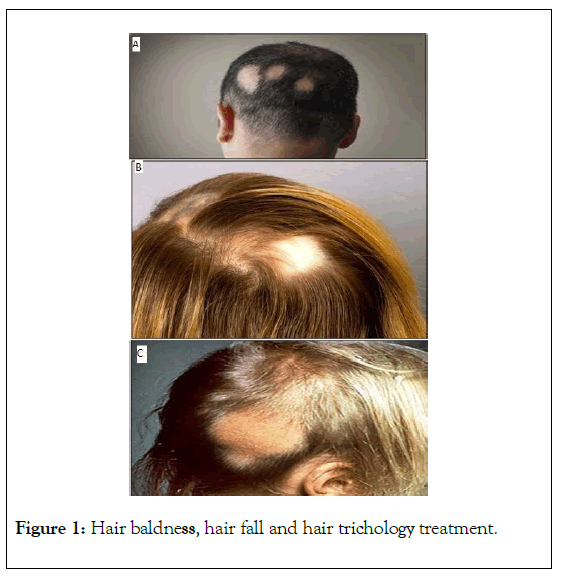Hair Therapy & Transplantation
Open Access
ISSN: 2167-0951
ISSN: 2167-0951
Clinical image - (2020)Volume 10, Issue 1
Alopecia areata is a condition that causes hair to fall out in small patches, which can be unnoticeable. Often it results in a few bald spots on the scalp, each about the size of a coin. The condition develops when the immune system attacks the hair follicles, resulting in hair loss. Alopecia areata also known as spot baldness. In a few cases, all the hair on the scalp or all body hair is lost and loss can be permanent. The condition can result in total hair loss, called alopecia universalis, and it can prevent hair from growing back. When hair does grow back, it’s possible for the hair to fall out again. The extent of hair loss and regrowth varies from person to person. The main cause is that it is an autoimmune condition in which the body attacks its own anagen hair follicles and suppresses or stops hair growth.
Alopecia; Hair treatments; Areata
The signs and symptoms of alopecia areata is that the hair starts to fall like patches and most often affects the scalp and beard.
Alopecia Areata occurs both in male and female but male experience this more likely to have a family history of the hair loss condition. Males face this type of hair loss mainly in their facial hair, as well as their scalp, chest, and back hair (Figure 1A).

Figure 1: Hair baldness, hair fall and hair trichology treatment.
Females experience this hair fall mainly in their scalp, eyebrow, and eyelashes (Figure 1B). Children younger than age 5 typically don’t experience much of an emotional impact from alopecia. After age 5, however, hair loss can be traumatizing for young children as they start noticing how they’re different from others (Figure 1C) [1-3].
Types of Alopecia Areata:
• Alopecia areata (patchy)
• Alopecia totalis
• Alopecia universalis
• Diffuse alopecia areata
• Ophiasis alopecia
Citation: d’Ovidio R (2020) Alopecia Areata in Males, Females and Children. Hair Ther Transplant. 10:151.
Received: 10-Jul-2020 Accepted: 27-Jul-2020 Published: 03-Aug-2020 , DOI: 10.35248/2167-0951.20.10.151
Copyright: © 2020 d’Ovidio R. This is an open-access article distributed under the terms of the Creative Commons Attribution License, which permits unrestricted use, distribution, and reproduction in any medium, provided the original author and source are credited.